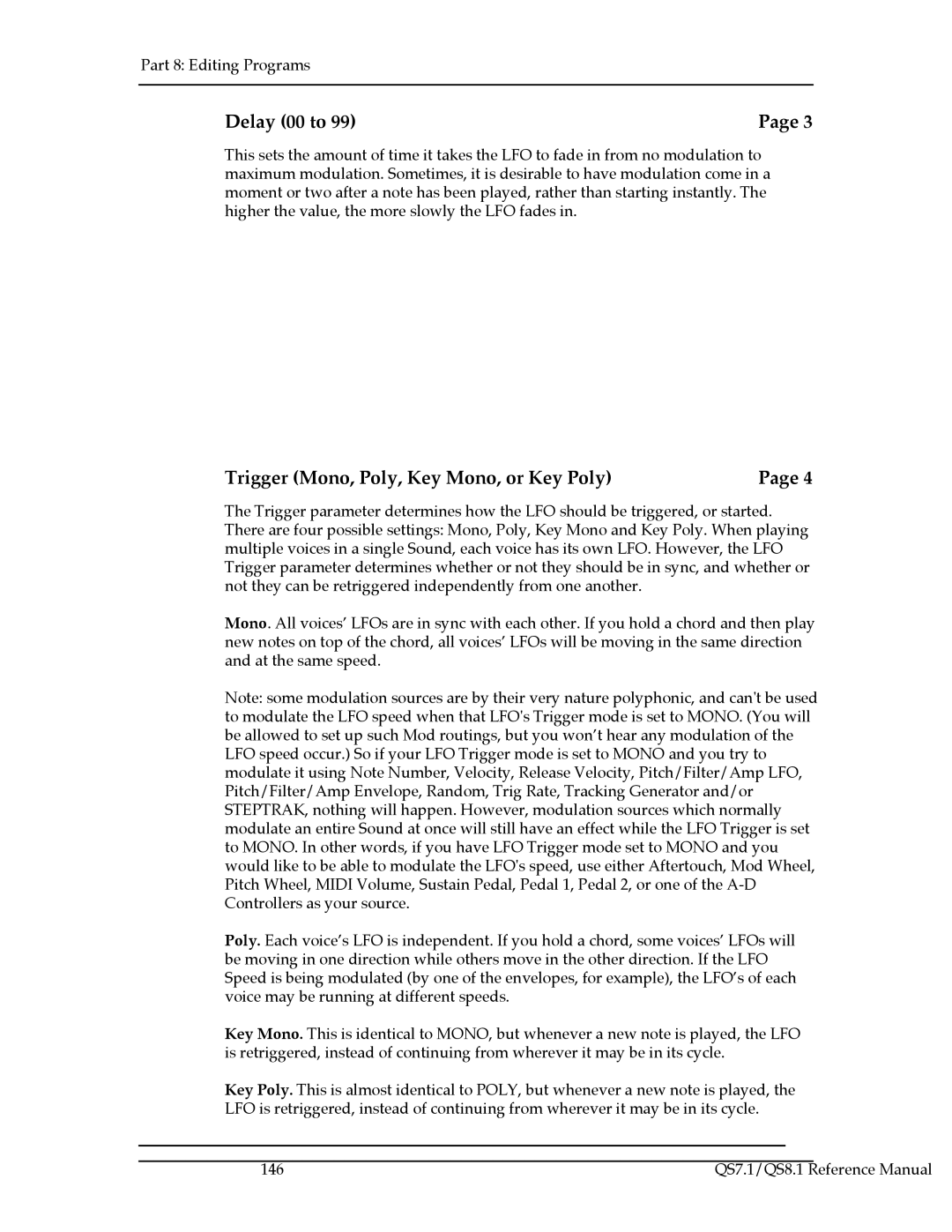
Part 8: Editing Programs
Delay (00 to 99) | Page 3 |
This sets the amount of time it takes the LFO to fade in from no modulation to maximum modulation. Sometimes, it is desirable to have modulation come in a moment or two after a note has been played, rather than starting instantly. The higher the value, the more slowly the LFO fades in.
Trigger (Mono, Poly, Key Mono, or Key Poly) | Page 4 |
The Trigger parameter determines how the LFO should be triggered, or started. There are four possible settings: Mono, Poly, Key Mono and Key Poly. When playing multiple voices in a single Sound, each voice has its own LFO. However, the LFO Trigger parameter determines whether or not they should be in sync, and whether or not they can be retriggered independently from one another.
Mono. All voices’ LFOs are in sync with each other. If you hold a chord and then play new notes on top of the chord, all voices’ LFOs will be moving in the same direction and at the same speed.
Note: some modulation sources are by their very nature polyphonic, and can't be used to modulate the LFO speed when that LFO's Trigger mode is set to MONO. (You will be allowed to set up such Mod routings, but you won’t hear any modulation of the LFO speed occur.) So if your LFO Trigger mode is set to MONO and you try to modulate it using Note Number, Velocity, Release Velocity, Pitch/Filter/Amp LFO, Pitch/Filter/Amp Envelope, Random, Trig Rate, Tracking Generator and/or STEPTRAK, nothing will happen. However, modulation sources which normally modulate an entire Sound at once will still have an effect while the LFO Trigger is set to MONO. In other words, if you have LFO Trigger mode set to MONO and you would like to be able to modulate the LFO's speed, use either Aftertouch, Mod Wheel, Pitch Wheel, MIDI Volume, Sustain Pedal, Pedal 1, Pedal 2, or one of the
Poly. Each voice’s LFO is independent. If you hold a chord, some voices’ LFOs will be moving in one direction while others move in the other direction. If the LFO Speed is being modulated (by one of the envelopes, for example), the LFO’s of each voice may be running at different speeds.
Key Mono. This is identical to MONO, but whenever a new note is played, the LFO is retriggered, instead of continuing from wherever it may be in its cycle.
Key Poly. This is almost identical to POLY, but whenever a new note is played, the LFO is retriggered, instead of continuing from wherever it may be in its cycle.
|
|
|
146 | QS7.1/QS8.1 Reference Manual | |
